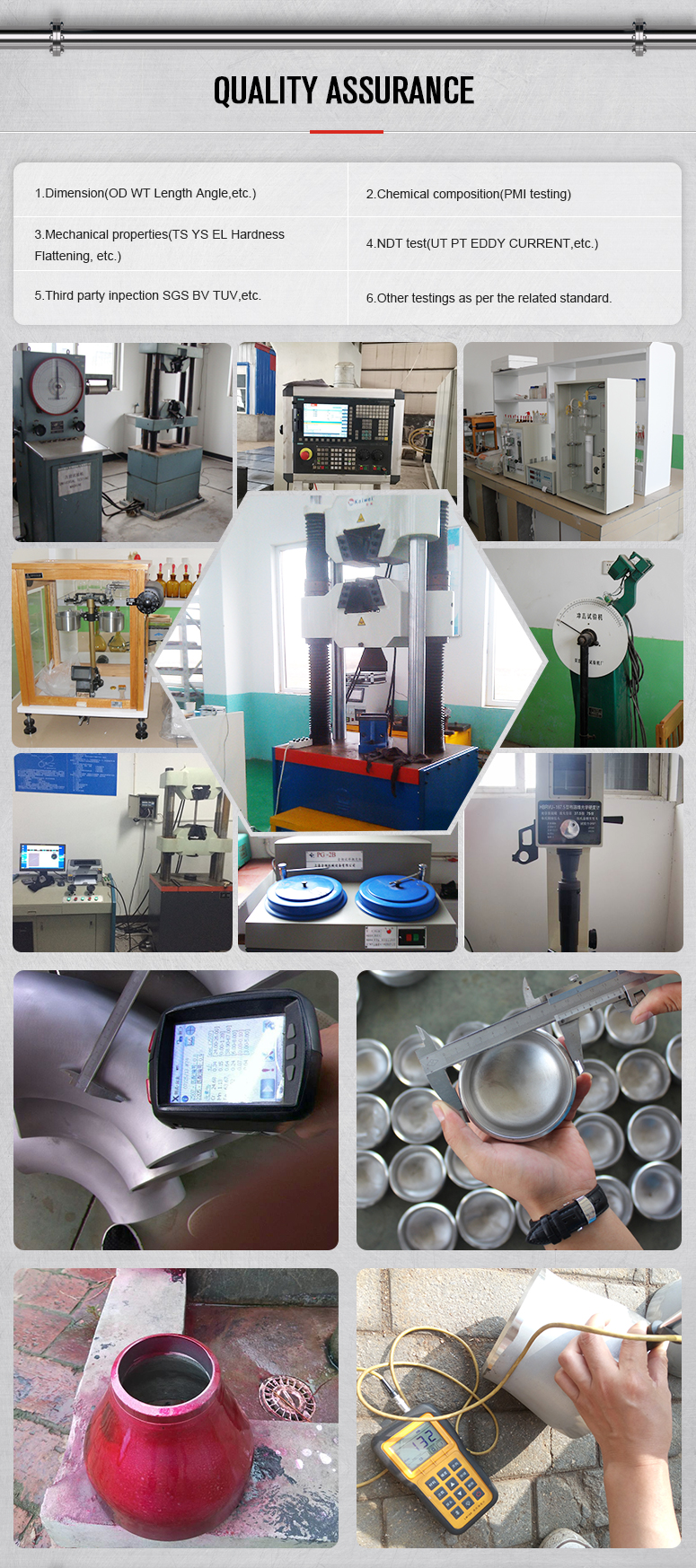Zhengzhou Huitong Pipeline Equipment Co.,Ltd. |
|
(1) the yield strength of austenitic stainless steel is twice
higher than that of ordinary austenitic stainless steel, and it has
enough plastic toughness for forming. The wall thickness of the
tank or pressure vessel made of duplex stainless steel is 30-50%
less than that of austenite, which is helpful to reduce the cost.
(2) it has excellent resistance to stress corrosion cracking. Even
the duplex stainless steel with the lowest alloy content has higher
resistance to stress corrosion cracking than the austenitic
stainless steel, especially in the environment containing chloride
ions. Stress corrosion is an outstanding problem that is difficult
to solve for ordinary austenitic stainless steel.
(3) the corrosion resistance of 2205 duplex stainless steel, which
is widely used in many media, is better than 316L austenitic
stainless steel, while the super duplex stainless steel has very
high corrosion resistance. In some media, such as acetic acid,
formic acid, etc., it can even replace high alloy austenitic
stainless steel and even corrosion-resistant alloy.
(4) it has good local corrosion resistance. Compared with
austenitic stainless steel with the same alloy content, its wear
resistance and fatigue corrosion resistance are better than
austenitic stainless steel.
(5) compared with austenitic stainless steel, the coefficient of
linear expansion is lower, close to carbon steel, suitable for
connection with carbon steel, which has important engineering
significance, such as production of composite plate or lining, etc.
(6) no matter under the condition of dynamic or static load, it has
higher energy absorption capacity than austenitic stainless steel,
which has obvious advantages in dealing with sudden accidents such
as collision, explosion, etc., and has practical application value.
2.About SS 304.
Grade 304 is a standard "18/8" stainless. It is the most versatile
and most widely used stainless steel available, even though a wide
range of alternatives are available; and has excellent forming and
welding characteristics. The balanced austenitic structure of Grade
304 enables it to be severely deep drawn without intermediate
annealing. This means that this grade steel is dominant in the
manufacture of drawn stainless parts such as sinks, hollow-ware and
saucepans. For these applications, it is common to use special
"304DDQ" (Deep Drawing Quality) variants. Grade 304 can be readily
braked or roll-formed into a variety of components for applications
in the industrial, architectural, and transportation fields. It
also has outstanding welding characteristics. Post-weld annealing
is not required when welding thin sections.
Composition:
| C | Mn | Si | P | S | Cr | Mo | Ni | N | |
| 304 | min. | - | - | - | - | - | 18 | - | 8 | - |
| max. | 0.08 | 2 | 0.75 | 0.045 | 0.03 | 20 | 10.5 | 0.1 | ||
| 304L | min. | - | - | - | - | - | 18 | - | 8 | - |
| max. | 0.03 | 2 | 0.75 | 0.045 | 0.03 | 20 | 12 | 0.1 | ||
| 304H | min. | 0.04 | - | - | -0.045 | - | 18 | - | 8 | - |
| max. | 0.1 | 2 | 0.75 | 0.03 | 20 | 10.5 |
Mechanical Properties:
| Grade | Tensile Strength (MPa) min | Yield Strength 0.2% Proof (MPa) min | Elongation (% in 50 mm) min | Hardness | |
| Rockwell B (HR B) max | Brinell (HB) max | ||||
| 304 | 515 | 205 | 40 | 92 | 201 |
| 304L | 485 | 170 | 40 | 92 | 201 |
| 304H | 515 | 205 | 40 | 92 | 201 |
Physical Properties:
| Grade | Density (kg/m3) | Elastic Modulus (GPa) | Mean Coefficient of Thermal Expansion (μm/m/°C) | Thermal Conductivity (W/m.K) | Specific Heat 0-100 °C (J/kg.K) | Electrical Resistivity (nΩ.m) | |||
| 0-100 °C | 0-315 °C | 0-538 °C | at 100 °C | at 500 °C | |||||
| 304/L/H | 8000 | 193 | 17.2 | 17.8 | 18.4 | 16.2 | 21.5 | 500 | 720 |

4.What is Hot push elbow:
Hot push elbow forming process has the characteristics of beautiful
appearance, uniform wall thickness and continuous operation, which
is suitable for mass production, so it has become the main forming
method of carbon steel and alloy steel elbow, and also applied in
the forming of some specifications of stainless steel elbow.
The heating mode of forming process includes medium frequency or
high frequency induction heating (heating ring can be multi or
single circle), flame heating and reflection furnace heating. The
heating mode depends on the requirements of forming products and
energy conditions. Stamping elbow is the first forming process used
in the mass production of seamless elbow. It has been replaced by
hot pushing or other forming processes in the production of common
elbow specifications. However, in some elbow specifications, due to
the small number of production, too thick or too thin wall
thickness.